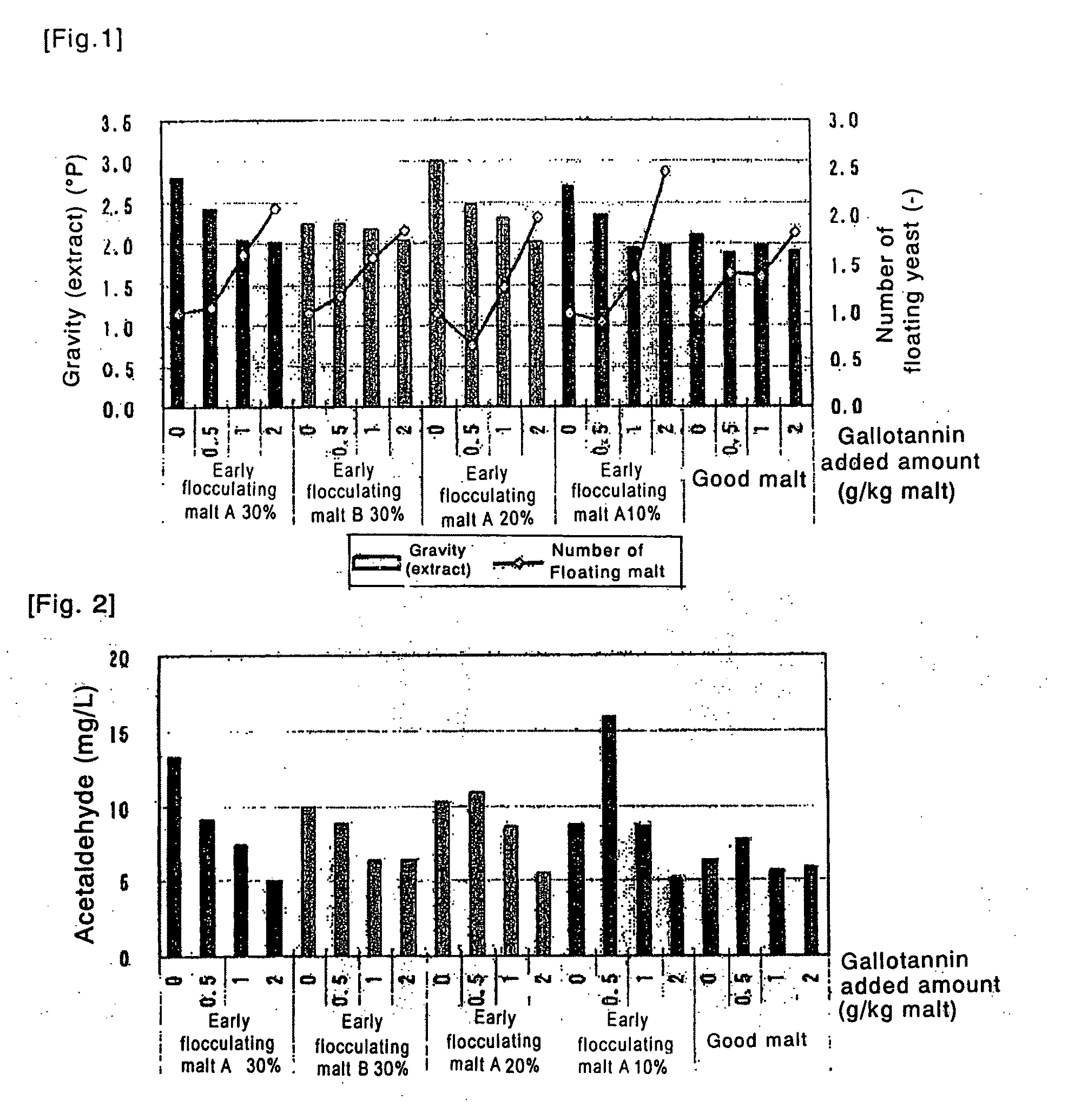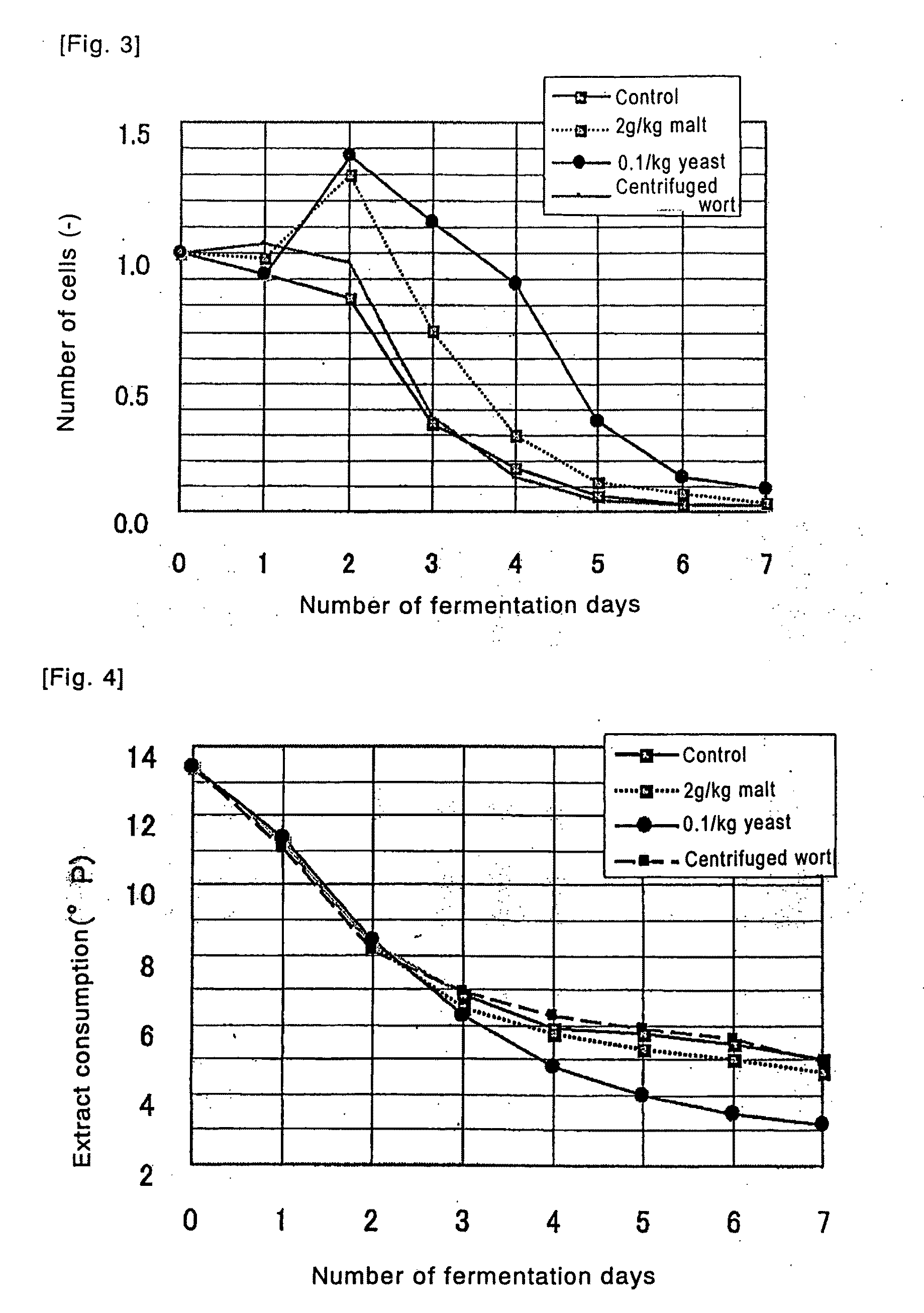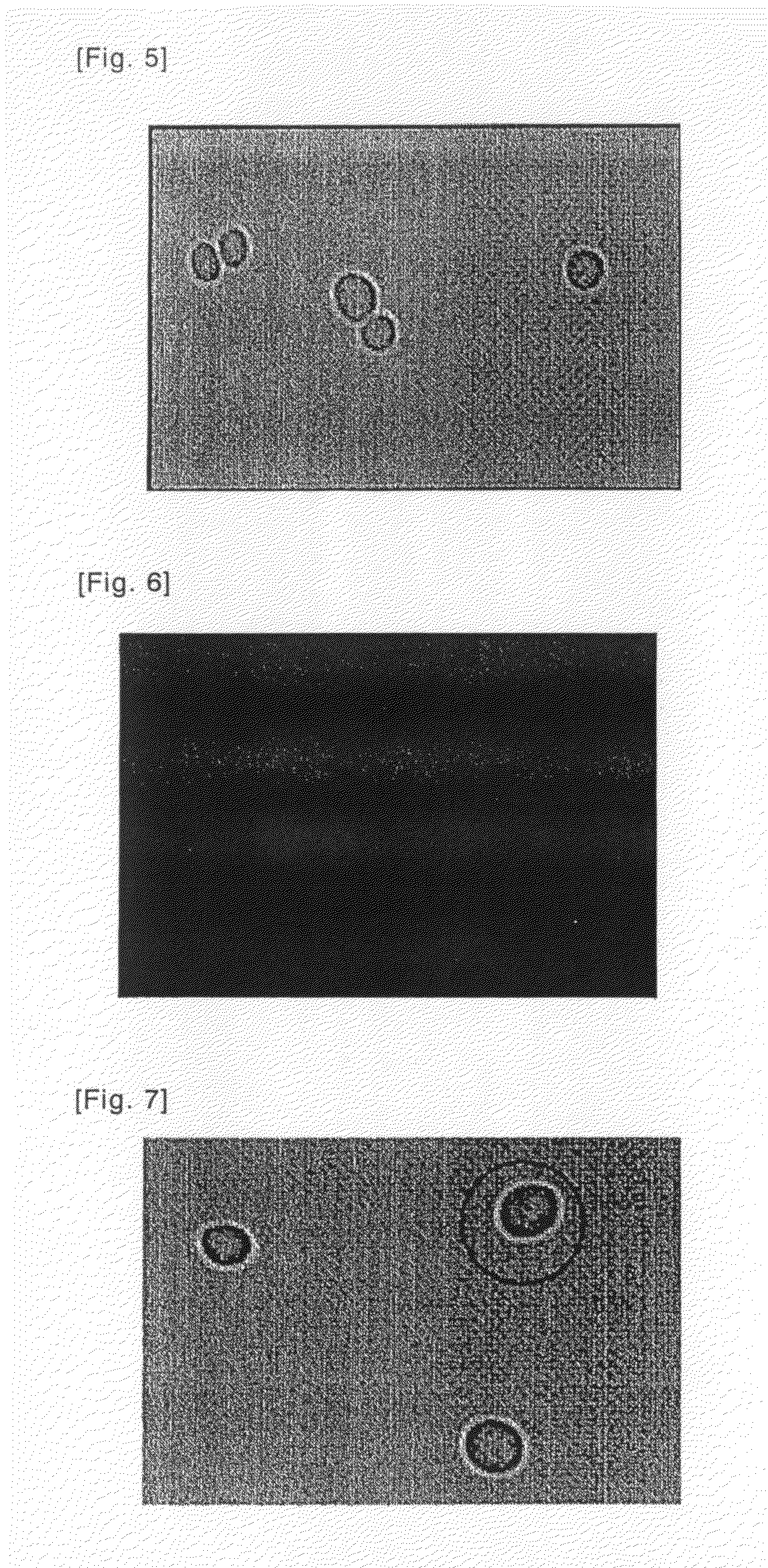Method of improving fermentability of early flocculating malt
- Summary
- Abstract
- Description
- Claims
- Application Information
AI Technical Summary
Benefits of technology
Problems solved by technology
Method used
Image
Examples
example 1
(Fermentability Improvement Effect of Gallotannin)
[0048]The fermentability improvement effect of gallotannin in wort for HAPPOSHU using PYF malt was examined.
(Methods)
[0049]In a 500 ml-fermentation test tube, gallotannin (0 to 2 g / malt kg=0 to 20 g / kg centrifuged yeast (2000 G·10 min)) was added to cold wort for HAPPOSHU, comprising 2 types of pale PYF malt (A, B) and 0 to 30% of good malt, and the mixture was fermented at 12° C.
(Results)
[0050]The chemical analysis results during the fermentation process and at the termination of fermentation are shown in FIGS. 1 and 2. FIG. 1 shows the relationship between the pale PYF malt rate and the gallotannin concentration (number of floating cells and gravity (extract) at day 7 of the main fermentation). In FIG. 1, the number of floating yeast (−) shows the rate of floating yeast when the added yeast is represented as 1. FIG. 2 shows the relationship between the pale PYF malt rate and the gallotannin concentration (analysis value of acetalde...
example 2
(Timing of Gallotannin Addition)
[0052]The difference of fermentability improvement effect according to the timing to add gallotannin was examined.
(Methods)
[0053]Wort for HAPPOSHU using dark PYF malt (20%) was used in a 500 ml-fermentation test tube, and the difference of behavior under the following conditions was observed.[0054](a) cold wort added with gallotannin (2 g / kg malt=20 g / kg centrifuged yeast (2000 G·10 min))[0055](b) yeast added with gallotannin (0.1 g / kg centrifuged yeast (2000 G·10 min))[0056](c) cold wort added with gallotannin (2 g / kg malt) and centrifuged, and from which all proteins are completely removed.
(Results)
[0057]The results are shown in FIGS. 3 and 4. FIG. 3 shows the fermentability improvement effect of gallotannin (transition of the number of floating cells during the main fermentation). FIG. 4 shows the fermentability improvement effect of gallotannin (transition of extract consumption during the main fermentation). As it is shown in the Figures, by addi...
example 3
(Maximum Added Amount of Gallotannin)
[0061]The effect of when an excessive amount of gallotannin is added was investigated.
(Methods)
[0062]In a 500 ml-fermentation test tube, gallotannin was added in an amount of 0, 2, 4 g / kg malt=0, 20, 40 g / kg centrifuged yeast (2000 G·10 min) to cold wort for HAPPOSHU comprising pale PYF malt (30%), and the mixture was fermented at 12° C.
(Results)
[0063]Chemical analysis results during the fermentation process and at the termination of fermentation are shown in FIGS. 11 and 12. FIG. 11 shows the confirmation results of the optimum added amount of gallotannin (transition of number of floating cells during the main fermentation), and FIG. 12 show the confirmation results of the optimum added amount of gallotannin (transition of extract consumption during the main fermentation). As it is shown in the Figures, the effect of gallotannin depends on the added concentration. However, as a decrease of extract consumption ability of yeast was observed in the...
PUM
 Login to View More
Login to View More Abstract
Description
Claims
Application Information
 Login to View More
Login to View More - Generate Ideas
- Intellectual Property
- Life Sciences
- Materials
- Tech Scout
- Unparalleled Data Quality
- Higher Quality Content
- 60% Fewer Hallucinations
Browse by: Latest US Patents, China's latest patents, Technical Efficacy Thesaurus, Application Domain, Technology Topic, Popular Technical Reports.
© 2025 PatSnap. All rights reserved.Legal|Privacy policy|Modern Slavery Act Transparency Statement|Sitemap|About US| Contact US: help@patsnap.com



